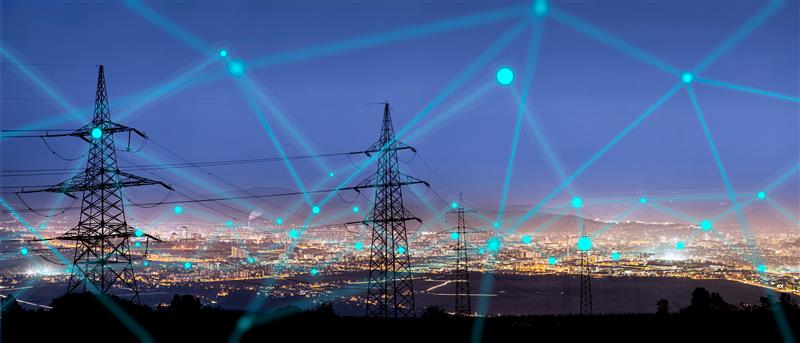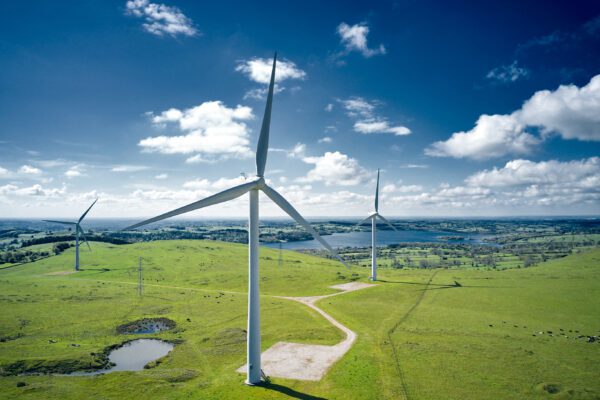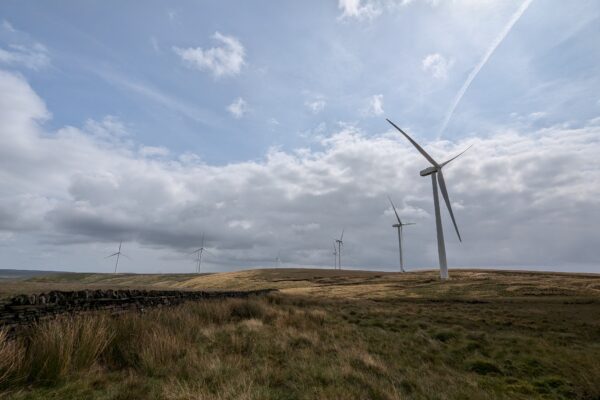
How to take control in an unpredictable energy market
Here's a recap of our recent webinar designed to help you navigate the complexities of the energy market.
The past five years have demonstrated just how volatile the energy market can be; from all-time price highs during the energy crisis to plummeting lows throughout the pandemic. Despite these fluctuations, energy remains a necessity to keep operations running.
These unforeseen events can have a huge impact on your energy costs. Thankfully, how and when you buy your energy, along with the type of power you purchase, can positively influence your costs, net-zero goals and the future security of your business.
Inspired’s experts recently hosted an exclusive webinar designed to help you navigate the complexities of the energy market, implement effective strategies, and mitigate financial pressures. You can watch the session on demand here.
Energy strategy: how and when you buy matters
Although the energy market appears more stable than it was a few years ago, short-term prices remain volatile and unpredictable. Extreme drivers have continued to fluctuate prices in 2025, from La Niña weather patterns forcing UK and European storage depletion to geopolitical events such as the Russia-Ukraine peace prospects, instability in the middle east and President Trump’s tariff trade policy.
The ongoing market movement sends a clear message: the timing of your energy purchase matters greatly.
Significant and abrupt price shifts make timing essential when buying this commodity. This year alone, we saw that a delay of 2 weeks in purchasing could have saved £1.5 million on a £5 million contract.
So, what strategy should you implement to secure the best rates and safeguard your business from future market volatility?
With future market drivers unknown and their impact unpredictable, transitioning away from fixed price energy contracts can help to reduce exposure to market spikes and avoid purchasing when costs are high. Also, with the market currently experiencing backwardation – where future wholesale prices are lower than present ones – there’s a clear opportunity to be proactive with buying into the future to secure more favourable rates.
In essence, a longer-term flexible contract will spread the purchasing across the contract’s duration, offering better price opportunities while minimising the impact of short-term weather patterns and geopolitical actions.
A specialist energy consultant can analyse the market movement and help you create a procurement strategy tailored to your requirements, budget and appetite for risk.
Green energy procurement: risks and opportunities
Exploring the benefits
Many businesses are now buying green energy, and for good reason.
To begin with, it can help mitigate financial risks. By committing to a “fixed” long-term price with a renewable generator, you can reduce exposure to volatile rates and budget with greater certainty. In some cases, you can also benefit from relief on certain non-energy costs – such as Renewable Obligation, Feed-in Tariffs and Contracts for Difference – if you can match your half-hourly (HH) consumption with the generator’s HH output.
From an environmental standpoint, a renewable procurement contract lets you choose your specific generation mix, aligning your supply with your net-zero and ESG goals. It can range from “pure green” sources like hydro, solar or wind, to “dirtier green” options that include biomass. Overall, purchasing green power can boost your ESG score, reduce your greenhouse gas emissions and improve your environmental credentials.
Choosing renewables improves stakeholder perception, and certain green contracts, like Corporate Power Purchase Agreements (CPPAs), can enhance your reputation even further through additionality. By investing your CPPA into the development of a new renewable project – be that onshore or offshore wind, a hydro scheme or solar park – it demonstrates to your stakeholders your commitment to a greener future.
Understanding the limitations
However, green procurement can also come with some risks and limitations.
For instance, your forecasted consumption may not align with your actual usage. While some volume tolerance is often allowed, if you over-forecast, you’ll still be required to pay the excess energy you didn’t end up using.
Also, due to climate-related factors, the forecasted generation may not match the actual energy generated, leaving you vulnerable to buy the surplus amount needed from a volatile market.
Finally, be aware of the potential lack of transparency in contracts, especially when a third-party or supplier is involved. This can lead to undisclosed commissions or hidden fees. So, make sure to work with a trusted professional who will provide full contract clarity and make you fully aware of who is getting paid and for what.
Green energy contract options
Now that we have summarised the benefits and limitations that come with green energy procurement, let’s explore the types of contracts available.
| Contract type | Summary | Opportunities | Risks |
|---|---|---|---|
| Buying Renewable Energy Generation Origin (REGO) certificates via a supplier. | When you buy or renew your flexible or fixed contract, you can ask for it to be green. Your supplier will provide REGOs, guaranteeing the source of renewable energy you are consuming. | Easy and simple to implement.
You just need to request green energy from your supplier. |
Often the most expensive option.
The supplier will source the REGOs from the generator and add their own margin, which is then included in your contract cost. |
| REGO Unbundled | You bypass the energy supplier and go directly to the generator. | You could secure a better rate.
You choose the generator which enhances credibility of the purchased certificate. More flexibility as you don’t have to couple the purchasing decision with the certificate purchasing decision. |
Still costly. |
| Corporate Power Purchase Agreement (CPPA) | You contract directly with a chosen generator to source renewable power. It can be sleeved into an existing supply contract or structured as a separate agreement. | It’s a cost-effective way of buying renewable energy.
Enhanced credibility through additionality. |
More complex to get over the line. |
| Direct wire | If you have sites close to a privately owned renewable generator asset, you can link your site to the asset via a direct wire. | As the power never touches the grid, it means that non-commodity costs get wiped off your bill. | It can be complex due to its contracting nature.
If the volume you are promising to take from that asset is over-forecasted, you’ll still need to pay for the unused excess energy. |
| On-site generation | You install renewable generation technology – most commonly solar PV panels – directly on your site. | As the energy does not touch the grid, no non-commodity costs are incurred.
You usually get a cheaper cost per unit of energy. |
Upfront capital investment.
Generation depends on site-specific factors. |
Thinking outside the box: a real-life example
One of our clients, a manufacturer with 9GWh of annual usage, previously spent £324,000 on REGOs over 3 years so they could report that no scope 2 emissions were generated.
However, what if that money could have been used in an alternative, smarter way?
Investing in on-site energy solutions can generate a list of benefits, including reduced consumption, which lowers both costs and carbon emissions. Also, unlike REGOs where the money spent won’t provide a financial payback, investing in your site will create a boomerang effect, driving a return on investment (ROI).
Here’s an alternative approach:
- Invest £41,000 in energy efficiency measures, such as installing submetering to identify waste, implementing heat recovery from air compressors and reviewing energy consumption during unoccupied periods.
- Save 342,000 kWh/year and just under £70,000/year, equivalent to 66 tonnes of carbon emissions.
- Achieve a 7-month payback and an 11-point ESG score increase.
- Use the remaining budget to buy REGOs for the reduced volume.
By reallocating a percentage of what was spent in green certificates to deploy initiatives on-site, the client could generate an ROI, increase their ESG score and reduce exposure to market volatility.
An expert partner can help you find the right green contract for your business and recommend out-of-the-box strategies to help you reach your financial and environmental goals.
Have you considered a Corporate Power Purchase Agreement?
Businesses aiming for greater access to renewable energy and a more stable energy supply are increasingly exploring Corporate Power Purchase Agreements. These are long-term contracts, around 10 to 15 years, that sit alongside your existing procurement strategy.
CPPAs can deliver additionality to improve brand recognition as well as help reduce carbon emissions, increase your ESG score and provide long term budget certainty by securing a percentage of your power from a renewable generation asset.
There are two types of Power Purchase Agreements: direct or sleeved Corporate Power Purchase Agreements (CPPAs) and Virtual Power Purchase Agreements (VPPAs).
Direct Physical CPPA
In a Corporate Power Purchase Agreement, the non-domestic buyer partners with a generator to physically procure renewable energy by having it sleeved into their existing supply contract.
Due to the complexity in CPPA agreements, it can take around 12 to 18 months and usually requires a third-party involvement to manage this process.
Typically, a CPPA involves partnering with new assets, allowing you to fund the project and claim additionality. These contracts can last up to 20 years, providing long-term certainty. However, if you are looking for a shorter-term CPPA, it’s possible to partner with an existing asset instead.
Also, a minimum of 10GWh is normally required for sleeving. However, if your energy volume is too low, there are alternative routes to market such as collective purchasing or joint ventures.
Virtual PPA
On the other hand, a Virtual Power Purchase Agreement (VPPA), also known as “synthetic”, is a financial agreement between the corporate and the generator. You would still provide financial support to the asset but wouldn’t take the physical energy produced.
Instead, you’d receive renewable energy certificates (RECs) and settle financially by receiving the difference between the agreed fixed contract price (known as the “strike price”) and the market price for the generated electricity. So, when the market price exceeds this rate, you would benefit from the surplus. Instead, if the market price falls below the VPPA rate, you must cover the shortfall.
VPPAs are quicker to negotiate and don’t require supplier involvement, making this contract type easier to implement.
CPPAs can be a powerful tool in securing price certainty and supporting net-zero goals. An established consultant like Inspired can help you navigate this process by providing a fully managed service, from assessing your initial requirements through to asset performance management.
The last five years has demonstrated just how volatile and unpredictable the energy market can be.
By enhancing your procurement strategy and exploring green energy contracts, you can take back control of your energy costs to future proof your business and its ability to compete.
Watch our dedicated webinar for greater insights into this topic or get in touch with an expert to learn more about the options available to your business.










